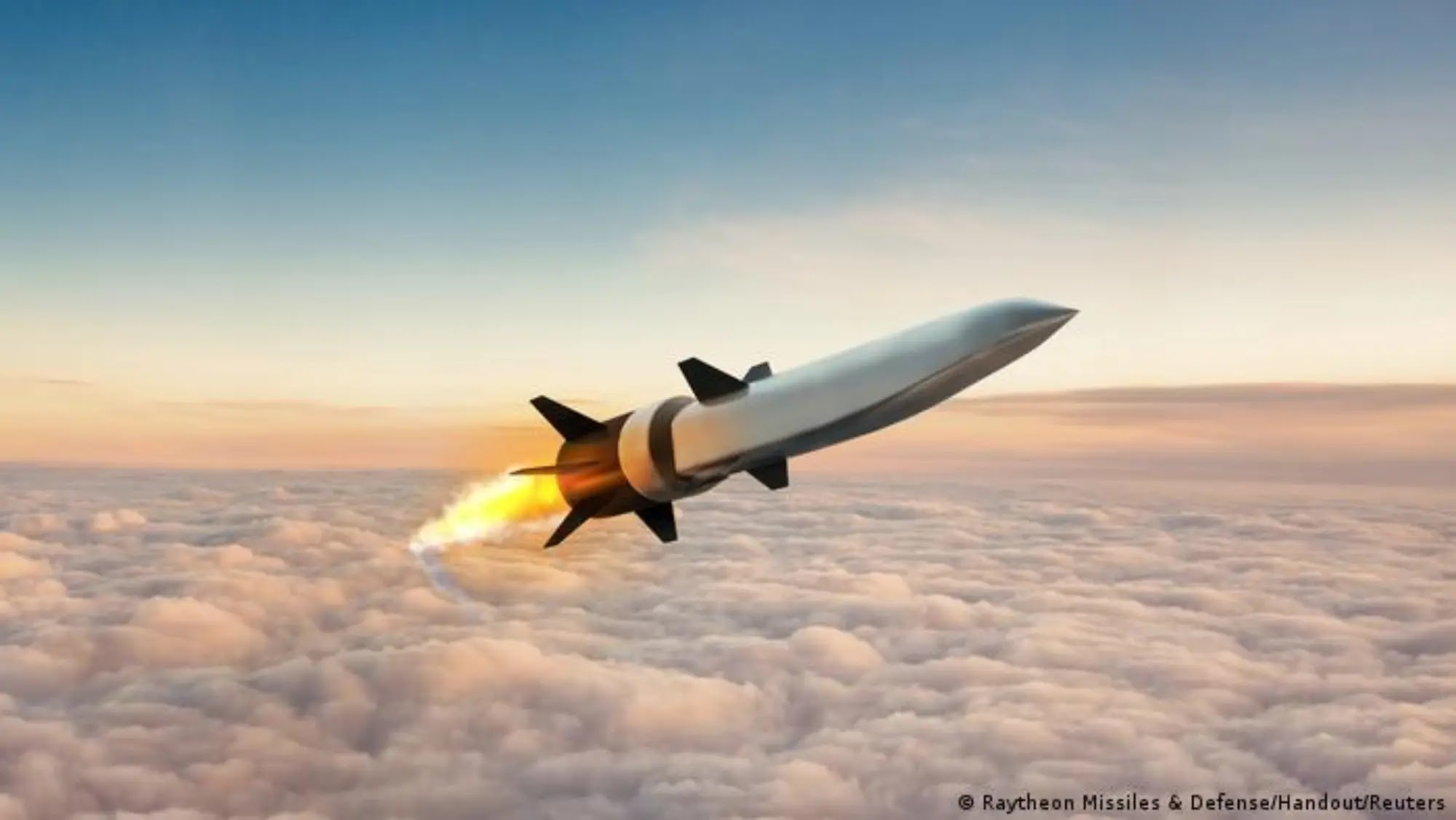The development of hypersonic weapons is at the center of a new weapons race. The United States, China, and Russia are currently trying to create the most effective long-range hypersonic missiles. According to a recent report, North Korea successfully built and tested a hypersonic missile on January 5, 2022, the country’s second announced hypersonic missile test.
These countries are interested in hypersonic missile technology because these sophisticated weapon systems may launch long-distance assaults without being detected by defensive systems such as radar and missile shields. Furthermore, hypersonic missiles may travel at speeds of up to 3,850 miles per hour. The technology appears to be highly promising on paper, but would it be simple to attain hypersonic speed in practice?
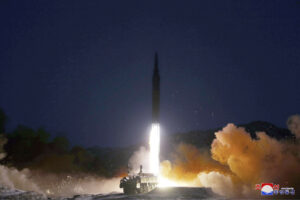 |
| North Korea tested a hypersonic missile on January 5, 2022, |
What does the term “hypersonic” mean?
In the context of missiles, hypersonic (meaning “excess speed”) refers to missiles that can travel long distances through the atmosphere at speeds more than five times the speed of sound or faster than Mach 5.
In aerodynamics, the speed of an object is often calculated in terms of the speed of sound, and different prefixes such as sub, super, and hyper are used to denote distinct speed ranges. The speed of sound varies with the medium through which it travels and the temperature of that medium.
The Mach number is the speed over the speed of sound in the medium. The speed of sound is approx. 767.269 mph
1534 mph has a Mach number of 2, it is considered a Mach 2 speed. Flight regimes are determined by the Mach number (Ma), therefore subsonic means Ma 1, transonic means Ma = 1, supersonic is between Mach 1 and Mach 3, and hypersonic is beyond Mach 5.
What exactly are hypersonic missiles, and how does hypersonic weaponry work? And what makes them so fast?
A hypersonic missile is any missile that can go faster than Mach 5 (or five times the speed of sound). There are primarily two types of hypersonic missiles: a hypersonic cruise missile, which is powered by engines throughout its flight, and a hypersonic boost-glide missile, which is boosted to hypersonic speeds by rockets and then glides through the atmosphere to its target, maneuvering with lift from the airflow.
The hypersonic cruise missiles would be propelled by sophisticated scramjet (supersonic combustion ramjet) engines that are still in development. Scramjets function by burning fuel in a stream of supersonic air compressed by the aircraft’s forward speed, and unlike traditional jet engines, scramjets have no mechanical components. Russia, with the 3M22 Zircon, the United States, the HAWC, India’s HSTDV, and China, are currently testing scramjet engines.
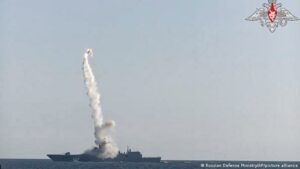
Hypersonic gliders are launched at speeds of up to Mach 20 atop a ballistic missile booster or a short-term rocket system. Then they separate and fly at hypersonic speeds, largely through the atmosphere, using airflow lift to remain aloft and maneuver. This form of a hypersonic missile is increasingly widespread; the Chinese DF-ZF and Russian Avangard hypersonic boost gliders are currently in service, and the US Army is developing its Common Hypersonic Glide Body (C-HGB).
A look back at the history of hypersonic missiles.
Hypersonic flight of artificial things is not a new technology. The Silbervogel, conceived by Austrian engineer Eugen Sänger and German scientist Irene Bredt in the late 1930s, was never built.
The two-stage Bumper rocket, built by Americans in 1949 from a seized German V-2 (fitted with a WAC corporal sounding rocket), briefly reached hypersonic speed during reentry before exploding.
During his historic orbital flight in 1961, Yuri Gagarin attained hypersonic speed for the first time. Two more members, Alan Shepherd and Robert White joined the hypersonic club within a year. They all, however, flew at hypersonic speeds for extremely short periods. Boeing was granted the design contract for the Dyna-Soar hypersonic glider in 1959, but the project was abandoned in 1963 for unclear reasons. Hypersonic flying research persisted, although it proved technically difficult.
On August 20, 1998, the US Navy received word that terrorist Osama bin Laden (who had bombed American embassies in Kenya and Tanzania the previous day) was hiding out in an al Qaeda base in Afghanistan. Navy ships launched cruise missiles towards Bin Laden’s camp from the Arabian Sea. Even though the rockets devastated the camp, Laden survived. One explanation might be that it took the rockets two hours to reach the target, 1100 miles distant. Later, Bin Laden was responsible for the heinous 9/11 assaults in the United States, which rocked the globe. Soon after the attacks, US President George W. Bush contemplated but ultimately rejected developing a conventional hypersonic missile for his country’s Prompt Global Strike system. Simultaneously, the United States exited the Anti-Ballistic Missile Treaty and constructed defense shields against ballistic missiles. Fearing that the shields would undermine their capacity to prevent an assault, Russia and China researched techniques to overcome the shields, including the deployment of hypersonic missiles.
The speed and maneuverability of hypersonic missiles were the two key aspects that renewed their interest. According to Bob Strider, the Hypersonics head at the US Army Space and Missile Defense Command, hypersonic missiles are designed to target a country’s anti-access and area-denial capabilities. “It’s meant to kick the door open and then enable other assets to come in,” he says.
Conventional intercontinental ballistic missiles can reach hypersonic speeds, but they follow a predictable parabolic trajectory that makes them easier to monitor and intercept. According to the Congressional Research Service, hypersonic missiles approach very quickly at low altitudes, making them far more difficult to monitor and hence difficult to destroy.
US hypersonic technology development initiatives
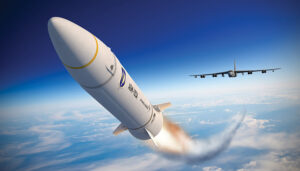
In 2003, the US Air Force and DARPA (Defense Advanced Research Projects Agency) initiated the FALCON Project to develop the Common Aero Vehicle (CAV) while considering the Prompt Global Strike (PGS) program (CAV). The CAV was designed to function as a conventional ballistic missile and a hypersonic reentry vehicle, but it was abandoned after two failed tests in 2010 and 2011.
DARPA began work on the Hypersonic Test Vehicle (HTV-2) in 2008 as part of the FALCON program, as a successor to the CAV. Unlike the spherical CAV, the HTV-2 was wedge-shaped. Although the launch, separation from the launcher, and initiation of the aerodynamic flight were all successful in two separate tests in 2010 and 2011, the actual glider failed to continue its flight. Finally, in 2018, the Department of Defense declared that it will no longer continue HTV-2 tests.
DARPA also worked on a new design under the ArcLight Program in 2010. However, the project was canceled in 2012. In 2010, the United States was also testing a hypersonic cruise missile driven by a jet engine, the Boeing X-51, this program ceased in 2013 without producing any encouraging findings.
Despite the US’s string of disappointments, one project involving hypersonic technology proved to be a triumph. The US Army began developing another hypersonic glider, the Advanced Hypersonic Weapon, in 2006. (AHW). This glider featured a conical shape, and the Army used it successfully in a test in 2011. Even though AHW failed to meet expectations during the second test done by the Department of Defense (DOD) in 2014, the last test conducted in 2017 utilizing a scaled-down version of AHW was a success. AHW was renamed Common Hypersonic Glide Body in 2018. (C-HGB). The Pentagon has suggested that this would be used as a standard hypersonic glide vehicle for the US Army, Navy, and Air Force.
Why is designing hypersonic weapons is so difficult?
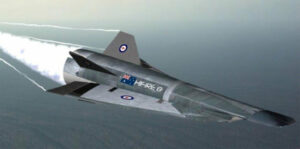
Managing atmospheric drag during the development of a hypersonic weapon is critical. The weapon encounters resistance proportionate to its speed as it moves through the air. Drag slows down the weapon, which is especially problematic with gliders because no engines power them.
Drag also adds to the temperature of the aircraft and the surrounding air rising. This heating can be so powerful at hypersonic speeds that it causes the surrounding air to ionize and become chemically reactive. This ionized air has the potential to damage the weapon’s surface. Furthermore, a moving layer of thick air known as a shock wave is created when an item travels faster than the speed of sound. At hypersonic speeds, this shock waveforms an extremely small angle with the weapon’s direction of motion and virtually hugs it, causing the high temperature chemically unstable air to come into close contact with the weapon’s surface. These elements jeopardize the weapon’s integrity, posing substantial issues in the design of hypersonic missiles.
Furthermore, while mobility is crucial for a strong hypersonic missile, low lift and high drag might limit this ability. Maneuvers may be expensive since changing the direction of an item traveling at hypersonic speeds consumes a large proportion of the object’s kinetic energy, slowing the thing down. “Any moves you do bleed off energy since you’re not powering the glider,” Bob Strider continues, “so you have to be cautious how many maneuvers you can make so you can manage the energy that’s in it to make sure you can get to the objective you want to.”
Due to the difficulties in developing high-quality hypersonic missiles, the country that produces high-quality hypersonic missiles first will have a leg up in this new-age arms race for hypersonic weapons. All of the key competitors in this armament race have had some success in developing and testing boost-glide missiles and scramjet technology. However, only China, North Korea, Russia, and the United States have successfully tested a hypersonic cruise missile. It remains to be seen how other countries catch up and how hypersonic missile non-proliferation will be tackled.

